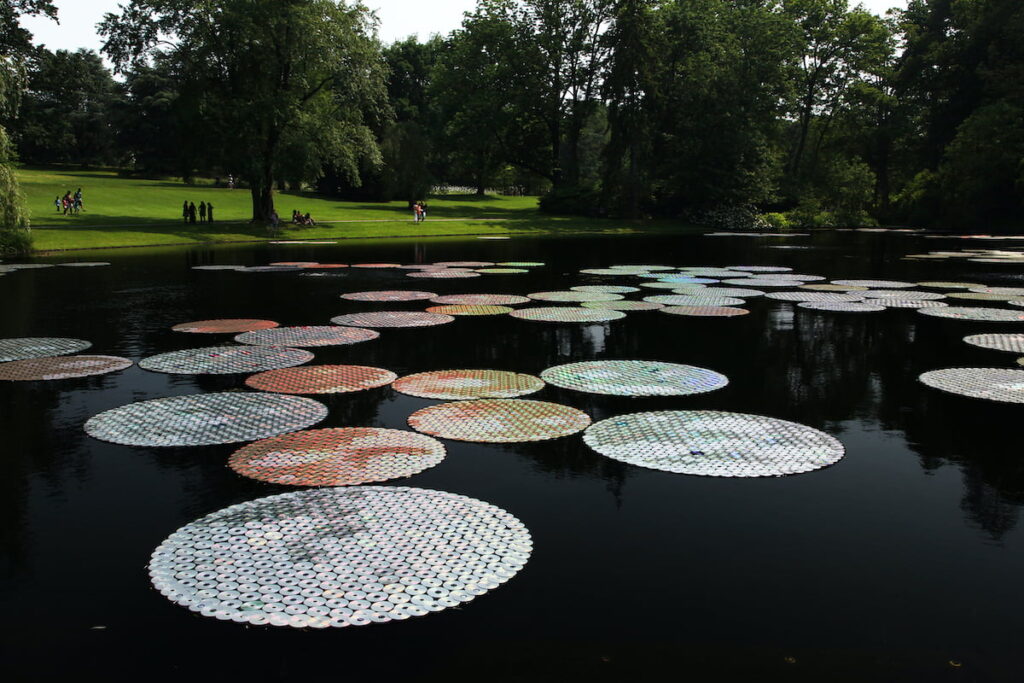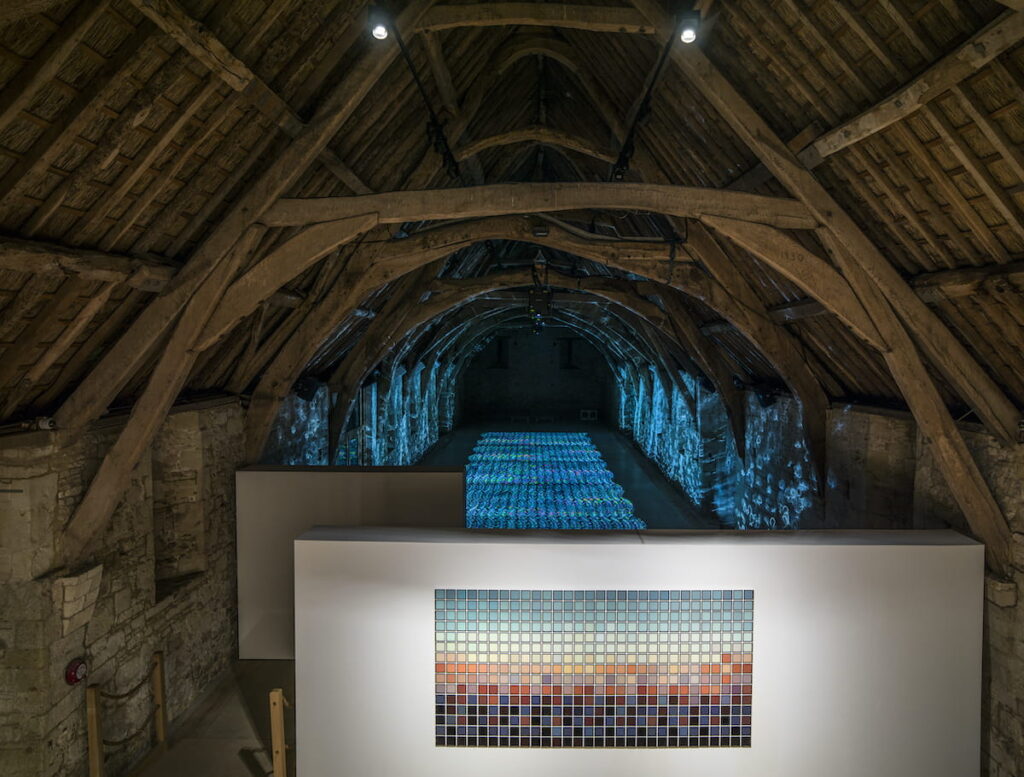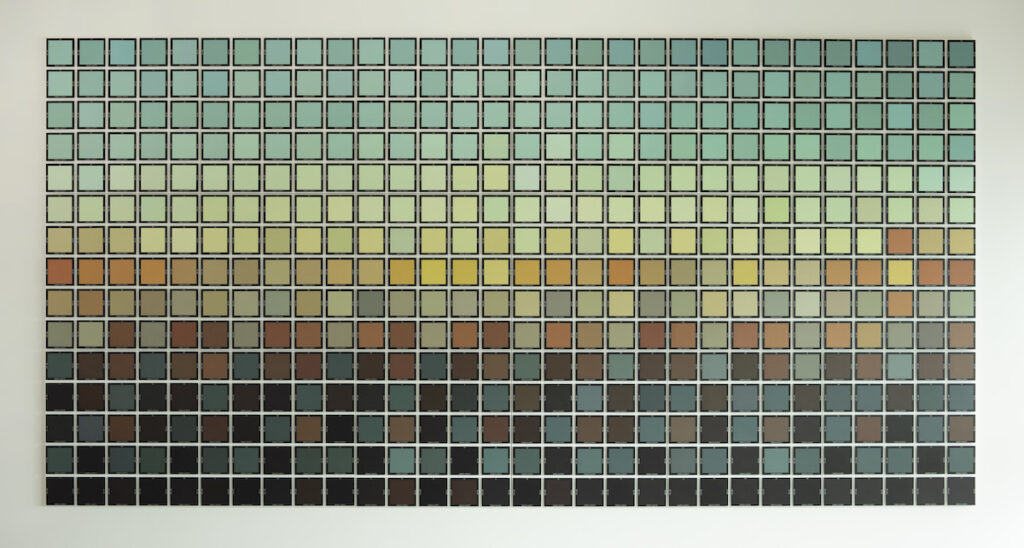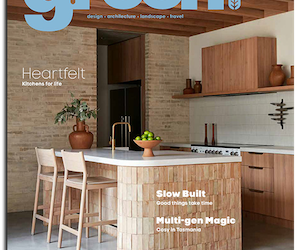Bruce Munro’s New Collection to Be Exhibited at Heide Museum of Modern Art in Melbourne
Heide Museum of Modern Art will present Bruce Munro: From Sunrise Road, the first museum exhibition in Australia of the work of internationally celebrated English/ Australian artist Bruce Munro, best known for his interactive, large-scale light installations inspired largely by his interest in shared human experience.
Presented from 25 June to 16 October, the exhibition combines spectacular indoor and outdoor experiential artworks with intimate story-pieces, revealing the depth of the artist’s practice and the breadth of his sources, from the personal and philosophical to the literary and spiritual.
Situated across Heide’s main galleries and sculpture park, the exhibition will present more than twenty key indoor works and an immersive outdoor light installation designed specifically for the site that will activate Heide’s iconic parklands at night.
Munro’s outdoor installation in the Heide gardens, titled Candent Spring, stems from his celebrated Field of Light at Uluru in Central Australia. At its heart is the stunning work Time and Again, a convex arrangement of abstracted clock faces, or stainless-steel waterlilies scored with codes and patterns symbolising past, present, future, infinity, and the speed of light: in essence a translation of time into a visual diagram. Evoking a time machine, the gleaming dome marks time during the day through the passing of clouds and sky, while at night the lilies shimmer like radial starbursts. The work is surrounded by large clusters of ‘fireflies’, cascading optical fibre forms that visitors can walk through as they come to life at dusk in formations evoking the glittering spray of igniting fireworks or, in the artist’s words, a ‘virtual fire’ to warm the soul.
“Heide is delighted to bring the work of Bruce Munro to Melbourne for the first time. The beauty of the natural world, the complexity of the human condition, and the vastness of the cosmos are all brought to bear in an exhibition that is at once playful, contemplative and thought-provoking, offering an unforgettable interactive experience to engage the senses and enrich the mind.”—Lesley Harding, Heide Museum of Modern Art Director
The time that the artist has spent living and working in Australia since the 1980s has infused his work strongly over the decades and informs many of the works in Bruce Munro: From Sunrise Road. The contrast between England’s soft light and gentle landscape and the sun-drenched dramatic topography of Australia has fueled his creative processes and desire to explore the emotions engendered by a moment in time at a specific location.
“From a shimmering river constructed from recycled CDs that project coded words of light, to interactive animations evoking kaleidoscopic landscapes and his poetic photography-based images, Munro’s work demonstrates a considered use of site and scale, and materials and technologies that are calibrated to inflect meaning and associations.”—Kendrah Morgan, Heide Museum of Modern Art Head Curator
Highlights presented inside the Heide Galleries include the immersive work Ferryman’s Crossing I (2015), which represents the artist’s reflections on Herman Hesse’s 1922 novel, Siddhartha, a story of one man’s spiritual journey of self-discovery during the time of Gautama Buddha. Siddhartha’s crossing of a river with a ferryman, who offers both his passenger and the reader insights into the interdependence of all things as he navigates the way, symbolises enlightenment. The coursing river serves as a metaphor for the continuous flow of time, with past, present and future merging together into one constantly moving whole or transcendent timelessness—a key theme in Munro’s practice.
Constructed from recycled CDs, Ferryman’s Crossing I suggests an abstracted luminescent river with a central crossing point. Beams of light are projected across the surface of the work in Morse code, visually mimicking the ‘language’ primarily used by mariners to transmit messages across vast bodies of water. The pulsating light spells out the words of an extract from Siddhartha:
The river is everywhere at once … everywhere at the same time. And that for it there is only the present, not the shadow called the future … And when I learned that, I looked at my life, and it too was a river. Nothing was, nothing will be: everything is, everything has its being and is present.
Munro’s interest in Morse code originated in his discovery in 2014 of the work of the South Korean abstract artist Kim Whanki (1913–1974). Whanki’s line and mark-making reminded Munro of musical notation and binary code, which led to ideas of messaging using pulsing light and translating text in a manner that produced both pattern and a decipherable message.
This can also be seen in Reflections 2016, a series of circular, kaleidoscopic, digital light animations, each with a different colour palette, and patterns and movement created using Morse code and graphics. Projected on the floor, the animations create a dreamlike environment that explores and reinforces the relationship between space and experience. The multi-layered visual content and accompanying soundtracks reference Munro’s specific experiences of poetry, music, religion, travels, and childhood stories, and his interpretation of those encounters. Clouds, for example, is an homage to poet William Wordsworth’s poem I Wandered Lonely as a Cloud, while Between Worlds conjures a tree canopy in dappled sunlight from the enchanted world of C.S. Lewis’s book The Magician’s Nephew.
Time and Place: Sunrise Road 2019, the work from which the exhibition takes its title, is a grid of changing light and colour based on photographic slides that Munro took of the paradisiacal coastal location in Sydney where he first lived in Australia in the 1980s. The artist divided three slides taken on separate days into tiny modules of colour and light and reconstructed them using more than 1000 magnetised tiles as the building blocks of one amalgamated image. The work will be displayed with an animated time lapse iteration.
Two large-scale works both titled Uluru, 2020, continue Munro’s investigation of the physical visualisation of memories and moments from specific sites and how they are recalled and reinterpreted. The images are comprised of carefully ordered compositions of vinyl dots derived from photographic panoramas taken by the artist at the ancient rock of Uluru in Central Australia, then pixelated. The colour, light and atmospheric conditions captured in the photographs are re-created through a systematic modular process of Munro’s own devising, which enables him to explore his ideas about the origins of an experience and their subsequent significance. His use of the spiral, a universal form, symbolises notions of a journey, growth, regeneration, and the path of enlightenment.
“I am delighted that Heide is presenting my first Australian museum exhibition. This unique site offers the ideal environment for my work within the gallery and surrounding parklands. Light is my medium, and a beautiful quality of light is that it captures the ephemeral. This illusive, seemingly no physical quality has a spiritual essence about it and makes it ideal as a medium to express abstract concepts such as emotions and connection and I felt an instant connection to the environs of Heide.”
Bruce Munro: From Sunrise Road brings together key works that explore light, experienced as either illumination or reflected wavelengths of colour. Collectively these works form a meditation on light that suggests how, when linked with time, it evokes memory and can capture the past.









